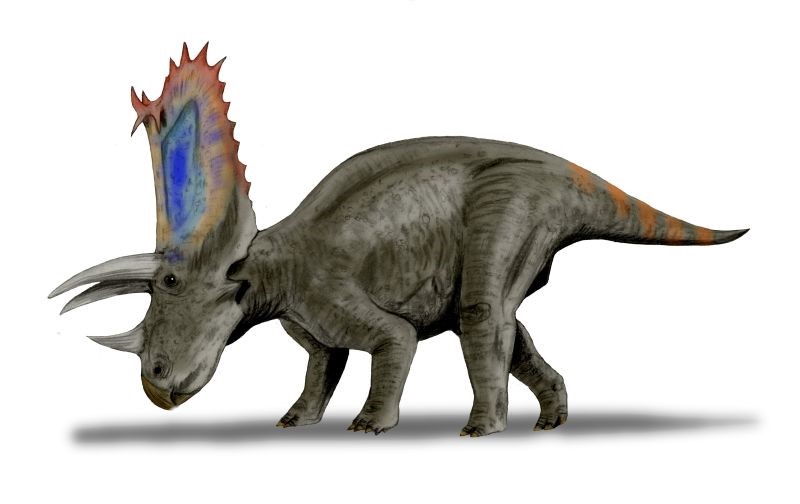Pentaceratops is a genus of large ceratopsid dinosaur that lived during the Late Cretaceous period, approximately 75 million years ago.

| Meaning | Five-horned face [Penta-cera-t-ops] |
| Pronunciation | pen-tah-SER-ah-tops |
| When: | Late Cretaceous (about 75–73 million years ago) |
| Where: | North America (USA, New Mexico) |
| What: | Ceratopsian (herbivorous) |
| Weight: | Estimated around 5 metric tons |
| Length: | Approximately 6–8 meters (20–26 feet) |
| Diet: | Herbivorous (ate cycads, ferns, and other vegetation) |
| Discovered: | First described by Henry Fairfield Osborn in 1923 |
It is known for its impressive skull adorned with five horns, which gives it its name meaning “five-horned face.”
Pentaceratops belonged to the same family as Triceratops and other ceratopsids, characterized by their large bodies, beaked faces, and elaborate frills.
The most distinctive feature of Pentaceratops is its skull, which is one of the largest of any known dinosaur.
It measures around 2.5 meters (8 feet) in length and is adorned with a central nose horn and two longer brow horns above each eye. In addition, Pentaceratops had two smaller horns on its frill, contributing to its formidable appearance.
Pentaceratops was a herbivore, using its robust beak to crop and slice through vegetation. Its dental structure included rows of teeth ideal for grinding plant material, enabling efficient processing of tough vegetation that was abundant in its Late Cretaceous habitat.
Fossils of Pentaceratops have been found primarily in the southwestern United States, particularly in New Mexico and Utah. These fossils provide valuable insights into the size, anatomy, and behavior of ceratopsid dinosaurs during the Late Cretaceous. Pentaceratops likely inhabited floodplain and riparian environments, where it could find ample vegetation to sustain its large size.
